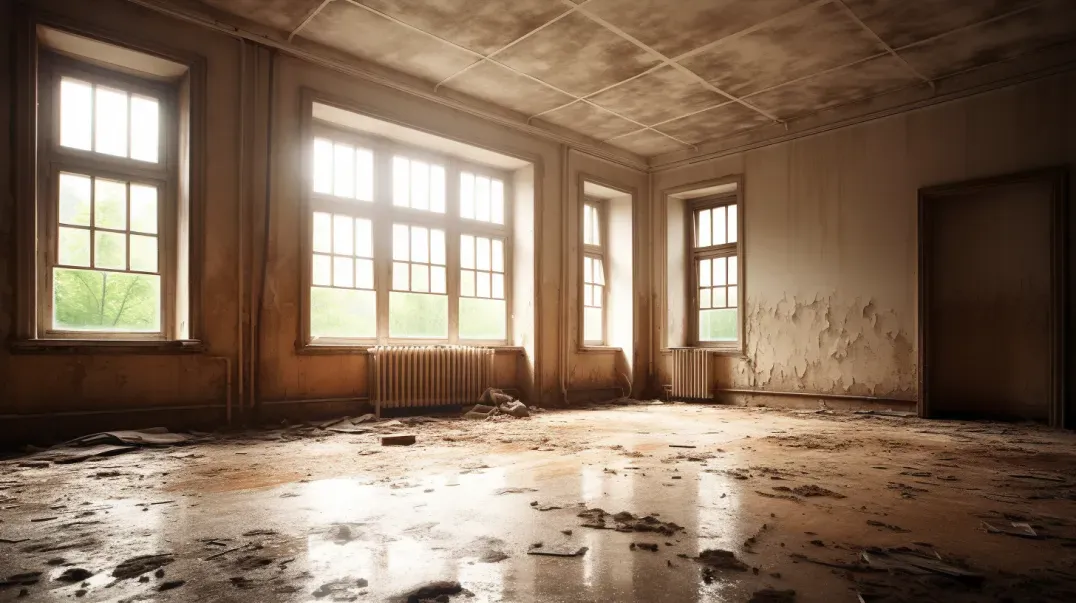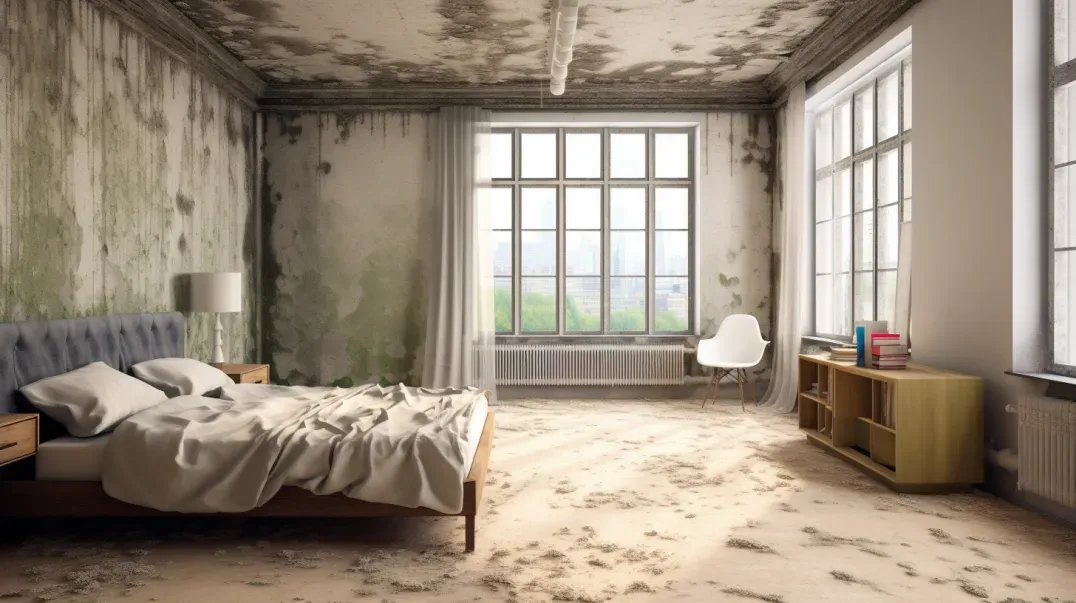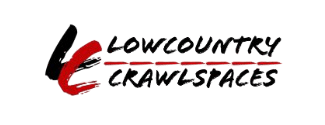Mold-Proofing Your Home: A Checklist for Homeowners
In the quest for a healthier living environment, the significance of mold-proofing cannot be overstated. Mold, a ubiquitous presence in both outdoor and indoor environments, poses not just a threat to the structural integrity of our homes but also to our health. This blog post delves into the vital importance of mold-proofing as a cornerstone of maintaining a healthy home environment. With insights drawn from environmental health experts, we unravel the hidden dangers of mold and the transformative benefits of proactive mold prevention measures.
Mold growth in homes is more than an aesthetic issue; it's a health hazard that can exacerbate allergies, respiratory conditions, and other health problems. The spores produced by mold can pollute our indoor air quality, turning our homes from safe havens into sources of potential health risks. However, the good news is that mold growth is preventable. By understanding the conditions that foster mold and implementing strategic mold-proofing measures, homeowners can protect their health and their homes.
This comprehensive guide aims to empower you with the knowledge and tools necessary to combat mold effectively. From identifying common mold hotspots to adopting a holistic approach to humidity control and ventilation, we cover essential strategies to fortify your home against mold. Whether you're battling existing mold issues or looking to prevent future growth, this post will provide you with actionable insights to create a healthier, mold-free living space.
Join us as we explore the importance of mold-proofing, shedding light on the unseen dangers of mold and the proactive steps you can take to ensure your home remains a healthy sanctuary for you and your loved ones. Discover how simple changes and preventive measures can make a significant impact on your home's health and your well-being.
Understanding the Basics of Mold
Mold is a common issue that many homeowners face, yet its basics are often misunderstood. This section aims to demystify mold, shedding light on what it is, why it's a problem in our homes, and the risks it poses to both our health and the structural integrity of our buildings. By understanding the fundamentals of mold, you can take more effective steps to prevent its growth and protect your home and health.
What is Mold and Why is it a Problem?
Mold is a type of fungus that can grow both indoors and outdoors, thriving in damp, warm, and humid environments. It reproduces through tiny spores that travel through the air, which can start to grow on surfaces within 24 to 48 hours under the right conditions. Mold comes in various types and colors, including black, white, green, or orange, and can grow on almost any substance when moisture is present.
Mold is a problem in homes for several reasons:
- Health Impact: Mold exposure can lead to various health issues, especially for those with allergies, asthma, or immune system disorders. Common symptoms include coughing, sneezing, throat irritation, nasal stuffiness, eye irritation, and skin irritation.
- Structural Damage: Mold can degrade building materials, including wood and drywall, leading to structural damage over time. This not only compromises the integrity of a home but can also lead to costly repairs.
- Aesthetic and Odor Issues: Mold growth can cause unsightly stains and a musty odor, affecting the overall comfort and livability of your home.
Health and Structural Risks of Mold
The risks associated with mold extend beyond mere inconvenience, posing significant health and structural threats:
- Health Risks: Prolonged exposure to mold can exacerbate respiratory problems and allergies. Certain types of mold, such as Stachybotrys chartarum (commonly known as black mold), produce mycotoxins that can be particularly harmful, though all molds should be treated with caution.
- Structural Risks: Mold feeds on organic materials like wood, paper, and fabric, breaking them down and causing decay. Over time, this can weaken the structural components of a home, leading to damage that can be expensive to repair.
Understanding these risks underscores the importance of mold prevention and prompt remediation. By controlling moisture levels, ensuring proper ventilation, and regularly inspecting your home for signs of mold, you can mitigate these risks and maintain a healthier, safer living environment.
Indoor Humidity and Ventilation
Maintaining a healthy home environment requires careful attention to indoor humidity levels and proper ventilation. Excessive moisture and inadequate air circulation can create ideal conditions for mold growth, leading to potential health risks and damage to your home. This section explores the importance of controlling indoor humidity and ensuring proper ventilation, offering practical tools and techniques to achieve a mold-free living space.
Controlling Indoor Humidity
Controlling indoor humidity is crucial in preventing mold growth. Mold thrives in moist environments, and by keeping indoor humidity levels in check, you can significantly reduce the risk of mold proliferation. The ideal indoor humidity level to prevent mold growth is between 30% and 50%.
- Dehumidifiers: These devices are effective in reducing moisture levels in the air, especially in damp areas of your home, such as basements and bathrooms. By extracting water from the air, dehumidifiers help maintain the recommended humidity levels, making your home less hospitable to mold.
- Air Conditioners: Besides cooling your home, air conditioners also remove moisture from the air. Ensure your air conditioning unit is correctly sized for your space and regularly maintained for optimal performance in humidity control.
- Ventilation Improvements: Simple actions like using exhaust fans in bathrooms and kitchens during and after moisture-producing activities (e.g., showering, cooking) can help expel excess moisture from your home.
Ensuring Proper Ventilation
Adequate ventilation is essential for preventing mold growth by allowing air to circulate and reducing moisture levels. Key areas to focus on include bathrooms, kitchens, and basements, where humidity tends to accumulate.
- Natural Ventilation: Open windows and doors when weather permits to allow fresh air to circulate throughout your home. This is one of the simplest and most cost-effective ways to reduce indoor moisture levels.
- Mechanical Ventilation: Exhaust fans in bathrooms and kitchens are crucial for removing moist air directly from these areas. Consider installing a whole-house ventilation system for continuous air exchange, especially in homes with tight seals against outdoor air.
- Ventilation Tips: Ensure that clothes dryers are vented to the outside to prevent moisture from being released into your home. Keep air vents unblocked by furniture or curtains to promote better air circulation.
By implementing these strategies for controlling indoor humidity and ensuring proper ventilation, you can create a healthier and more comfortable living environment. Regularly monitoring humidity levels and maintaining good ventilation practices will help protect your home from mold and its associated risks.
Water Leak Prevention and Maintenance
Water leaks in a home not only waste water and increase utility bills but also create the perfect conditions for mold growth by adding unwanted moisture into the environment. Preventing and addressing leaks promptly can significantly reduce the risk of mold proliferation and protect the structural integrity of your home. This section focuses on the critical practices of regular inspection of plumbing and the importance of immediate repair and maintenance to prevent moisture accumulation.
Regular Inspection of Plumbing
Conducting regular inspections of your home's plumbing system is essential in identifying potential leaks before they escalate into larger problems. Here is a checklist to guide you through inspecting pipes, faucets, and appliances for leaks:
- Pipes: Check for any signs of condensation or corrosion on pipes. Look for wet spots on the ground or walls that indicate leaks.
- Faucets: Inspect faucet bases and under sinks for moisture or water stains. Listen for drips and check for leaks around the base and under the sink.
- Appliances: Examine connections to washing machines, dishwashers, water heaters, and refrigerators (if they have ice makers or water dispensers). Look for puddles or stains that may indicate leaks.
- Toilets: Check for signs of leaks by listening for running water and looking for water around the base of the toilet.
- Outdoor Spigots: Ensure outdoor spigots and irrigation systems are leak-free and properly drained before the cold season to prevent freezing and bursting.
Immediate Repair and Maintenance
The importance of prompt repairs cannot be overstated when it comes to preventing moisture accumulation and mold growth. A small leak can quickly turn into a significant problem, leading to extensive water damage and mold issues.
- Prioritize Repairs: Address leaks as soon as they are detected. Even minor leaks can lead to significant water damage over time.
- Professional Help: For complex issues or if you're unsure about a repair, don't hesitate to contact a professional plumber. They can ensure repairs are done correctly and can help identify potential problems you might have missed.
- Regular Maintenance: Keep up with regular maintenance tasks, such as replacing worn washers in faucets, inspecting hoses on appliances for cracks or bulges, and cleaning out gutters and downspouts to prevent water buildup around your home's foundation.
By adopting a proactive approach to water leak prevention and maintenance, you can safeguard your home against the risks of mold growth and water damage. Regular inspections and immediate repairs play a crucial role in maintaining a healthy, mold-free home environment.
Cleaning and Maintenance Routines
Maintaining a clean and well-maintained home is not just about aesthetics; it's a critical component in preventing mold growth and ensuring a healthy living environment. Mold thrives in damp and neglected spaces, making regular cleaning and targeted maintenance in high-risk areas essential. This section outlines recommended cleaning practices and highlights the importance of focusing on areas most susceptible to mold buildup.
Regular Cleaning Schedule
Implementing a regular cleaning schedule is key to preventing mold growth by removing potential food sources for mold and reducing moisture. Here are some recommended practices:
- Dry Wet Areas Immediately: Mold can begin to grow within 24-48 hours on wet surfaces. Wipe up spills, dry out wet clothes, and remove standing water promptly.
- Use Mold-Resistant Products: Where possible, use mold-resistant shower curtains, paints, and building materials, especially in high-moisture areas.
- Ventilate: Ensure rooms, especially bathrooms and kitchens, are well-ventilated. Use exhaust fans or open windows to reduce moisture.
- Dust and Vacuum Regularly: Dust can be a food source for mold. Regular dusting and vacuuming, using a vacuum with a HEPA filter, can help minimize mold growth.
- Maintain Humidity Levels: Use dehumidifiers or air conditioners to keep indoor humidity levels between 30% and 50%.
Focus on High-Risk Areas
Certain areas of your home, like bathrooms, kitchens, and basements, are more prone to mold growth due to higher moisture levels. Special attention to these areas can prevent mold buildup:
- Bathrooms: Clean and dry shower walls and curtains after use. Check for and repair any leaks in toilets, sinks, and plumbing. Use mold-resistant caulk around tubs and sinks.
- Kitchens: Clean up spills and leaks promptly. Use exhaust fans to remove excess moisture from cooking. Regularly clean refrigerator drip pans and ensure the area under the sink is dry.
- Basements: Use a dehumidifier to control humidity levels. Inspect for and repair any foundation leaks. Store items in waterproof bins to prevent moisture absorption.
By establishing a routine that includes these cleaning and maintenance practices, you can significantly reduce the risk of mold growth in your home. Regular attention to high-risk areas and prompt action to reduce moisture will help maintain a healthier living environment, free from the dangers of mold.
Mold-Resistant Materials and Construction
Incorporating mold-resistant materials and employing best practices during construction or renovation projects are critical steps in creating a durable, healthy living environment. Mold can cause significant damage to buildings and health problems for occupants, making prevention a key consideration in any construction or renovation plan. This section provides recommendations for choosing mold-resistant building materials and offers tips for mold-proofing during construction or renovation.
Choosing Mold-Resistant Building Materials
Selecting the right materials is the first line of defense against mold growth. Here are some recommendations for mold-resistant paint, drywall, and flooring:
- Mold-Resistant Paint: These paints contain antimicrobial agents that prevent mold growth on painted surfaces. They are ideal for high-moisture areas like bathrooms and kitchens.
- Mold-Resistant Drywall: Traditional drywall can absorb moisture, making it a breeding ground for mold. Mold-resistant drywall is treated with a water-resistant core and is ideal for areas prone to moisture.
- Mold-Resistant Flooring: Options like ceramic tile, laminate, and vinyl are less likely to support mold growth compared to carpeting, especially in damp areas. For basements and bathrooms, consider using these moisture-resistant flooring options.
Construction and Renovation Tips
Whether you're building a new home or renovating an existing one, incorporating mold-proofing measures can save time, money, and health issues down the line. Here are best practices for mold-proofing during construction or renovation:
- Proper Ventilation: Ensure that your design includes adequate ventilation, especially in high-moisture areas. Use exhaust fans in bathrooms and kitchens to remove moisture to the outside.
- Moisture Barriers: Install moisture barriers in areas prone to dampness, such as basements and crawl spaces. This can prevent ground moisture from entering the home.
- Sealant Use: Apply sealants around windows, doors, and other openings to prevent water intrusion. Make sure the building envelope is tightly sealed to keep moisture out.
- Quick Drying of Construction Materials: Ensure that building materials are kept dry during construction. If materials get wet, dry them quickly to prevent mold growth.
- Design for Drainage: Plan landscaping and outdoor grading to direct water away from the building. Proper drainage can prevent water accumulation around the foundation, reducing the risk of moisture intrusion.
By choosing mold-resistant materials and following these construction and renovation tips, you can significantly reduce the risk of mold growth in your home. These measures not only contribute to a healthier indoor environment but also enhance the durability and value of your property.
FAQs
Contact Lowcountry Crawlspaces Today!
Lowcountry Crawlspaces will do everything we can to ensure your experience with us is excellent.
Request A FREE Estimate
CHECKOUT RECENT POST



Schedule Your FREE Crawl Space Evaluation Today
There Is No Crawl Space Job We Can’t Fix!




